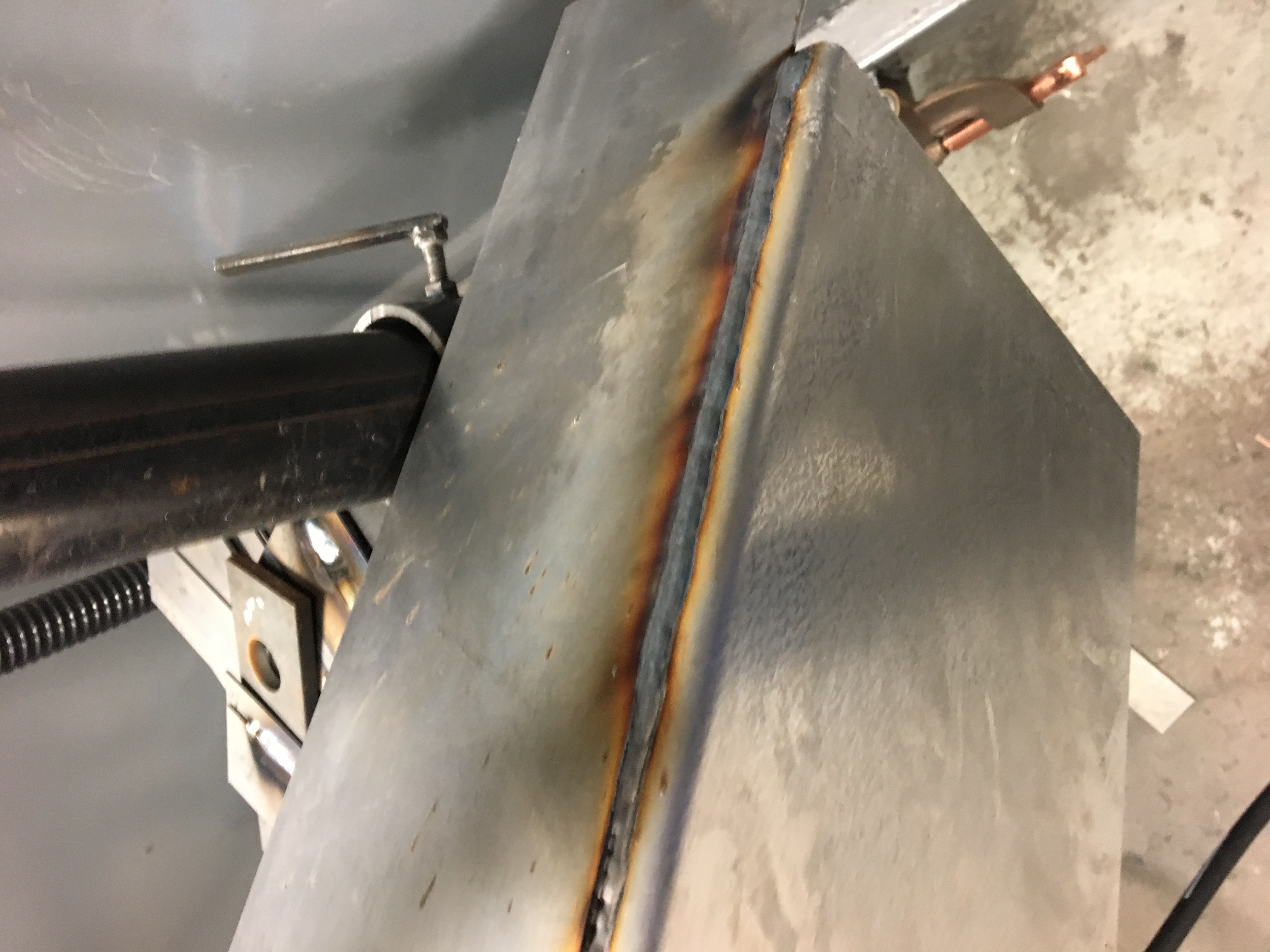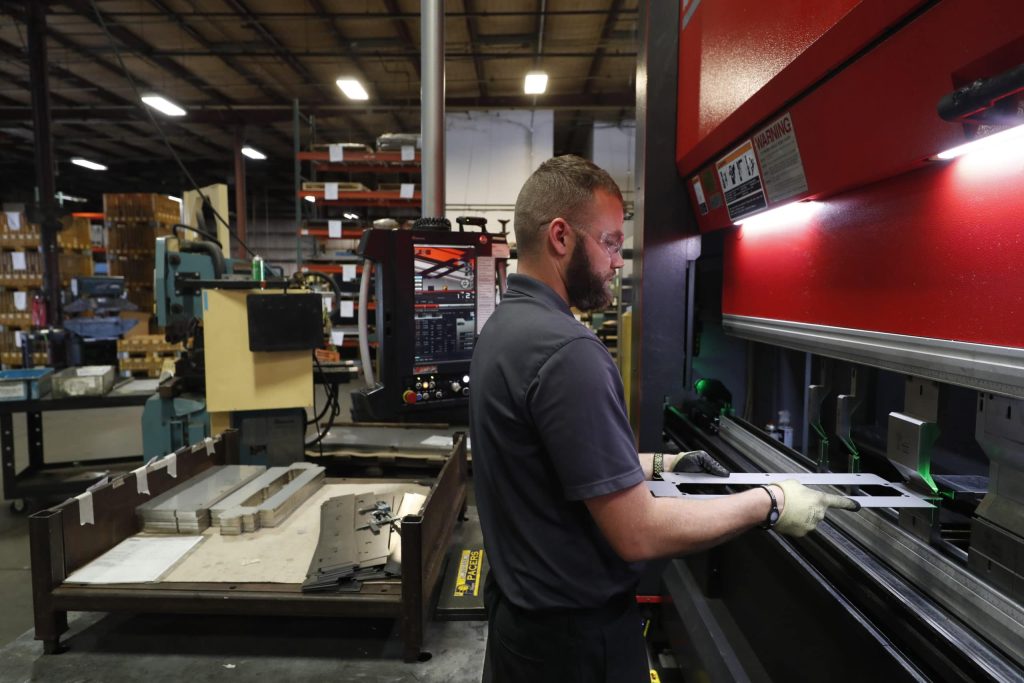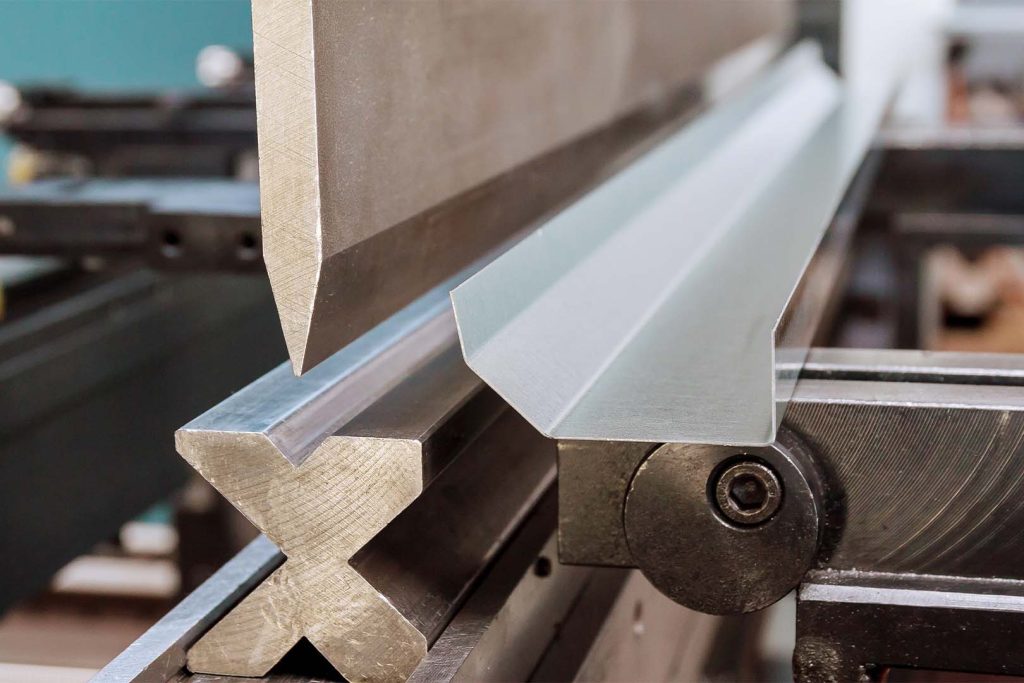Table of Contents
Galvanized sheet metal is a popular material used in various applications, from roofing to industrial fabrication. However, welding galvanized sheet metal can be a challenging task for many welders. The zinc coating on the surface of the metal creates a barrier that can prevent proper welding and lead to health hazards if not handled correctly.
But, is it possible to weld galvanized sheet metal? The short answer is yes, but there are important factors to consider before attempting to weld this material. In this article, we will explore the hazards of welding galvanized sheet metal, the techniques used to weld it, and the precautions you need to take to ensure a safe and successful welding process.
Can You Weld Galvanized Sheet Metal?
Galvanized sheet metal is a popular material for construction and DIY projects, thanks to its durability and resistance to rust and corrosion. But can you weld galvanized sheet metal? The answer is yes, but there are some important considerations to keep in mind to ensure a successful weld.
Understanding Galvanized Sheet Metal
Galvanized sheet metal is steel that has been coated with a layer of zinc to protect it from rust and corrosion. This coating is applied through a process called hot-dip galvanization, where the steel is dipped into a bath of molten zinc. The zinc bonds with the steel, forming a protective barrier that keeps the metal from corroding.
The zinc coating can make welding galvanized sheet metal more challenging, however. When the metal is heated, the zinc layer can vaporize and create harmful fumes that can be dangerous if inhaled. Additionally, the zinc coating can interfere with the welding process, making it difficult to create a strong and reliable weld.
Preparing Galvanized Sheet Metal for Welding
To successfully weld galvanized sheet metal, it’s important to properly prepare the metal beforehand. This includes removing any dirt, oil, or other contaminants from the surface of the metal. It’s also important to remove the zinc coating from the area where the weld will be made, as this can interfere with the welding process.
One way to remove the zinc coating is to use a wire brush or grinder to grind away the coating in the area where the weld will be made. Another option is to use a chemical weld cleaner to dissolve the zinc coating before welding.
Welding Galvanized Sheet Metal
When welding galvanized sheet metal, it’s important to take precautions to avoid inhaling harmful fumes. This includes wearing a respirator mask and working in a well-ventilated area.
To create a strong weld, it’s best to use a MIG welder, as this can help prevent the zinc coating from interfering with the welding process. It’s also important to use the proper welding settings, including adjusting the voltage and wire speed to ensure a stable arc.
After welding, it’s important to clean the weld area to remove any remaining zinc coating or other contaminants. This can be done using a wire brush or grinder, or by using a chemical cleaner specifically designed for cleaning welded metal.
Benefits of Welding Galvanized Sheet Metal
Welding galvanized sheet metal can offer a range of benefits, including increased durability and resistance to rust and corrosion. This can make it an ideal material for a variety of construction and DIY projects, including fences, gates, and other outdoor structures.
Additionally, welding galvanized sheet metal can help create a strong and reliable weld that can withstand the test of time. This can help reduce the need for future repairs or replacements, saving time and money in the long run.
Galvanized Sheet Metal vs. Other Weldable Metals
While galvanized sheet metal can be welded, it’s important to keep in mind that it may not be the best choice for every project. Other weldable metals, such as stainless steel or aluminum, may offer different advantages depending on the specific needs of the project.
For example, stainless steel is highly resistant to corrosion and can be a good choice for projects that require a high level of durability and strength. Aluminum, on the other hand, is lightweight and offers excellent heat conductivity, making it a good choice for projects that require efficient heat transfer.
Conclusion
Welding galvanized sheet metal can be a challenging process, but with the right preparation and precautions, it can be done successfully. By understanding the properties of galvanized sheet metal and taking the proper steps to prepare the metal and protect yourself from harmful fumes, you can create a strong and reliable weld that will last for years to come.
Frequently Asked Questions
Here are some common questions and answers about welding galvanized sheet metal.
Can you weld galvanized sheet metal?
Yes, it is possible to weld galvanized sheet metal using the proper techniques. However, it is important to note that welding galvanized metal can be hazardous due to the potential release of toxic fumes. Therefore, it is important to take proper safety precautions when welding galvanized metal.
One technique for welding galvanized metal is to remove the zinc coating from the area to be welded before starting the welding process. This can be accomplished by grinding or sanding the area until the zinc coating is completely removed. Another technique is to use a welding wire specifically designed for welding galvanized metal. This wire is made with a flux coating that helps to prevent the release of toxic fumes during welding.
What safety precautions should you take when welding galvanized sheet metal?
When welding galvanized sheet metal, it is important to take proper safety precautions to protect yourself from the potential release of toxic fumes. This includes wearing a respirator that is designed to filter out harmful particles and fumes. Additionally, you should work in a well-ventilated area to help prevent the buildup of fumes.
It is also important to use proper welding techniques when working with galvanized metal. This includes using a welding wire specifically designed for galvanized metal and removing the zinc coating from the area to be welded before starting the welding process.
What are the benefits of welding galvanized sheet metal?
Welding galvanized sheet metal can provide a number of benefits. For example, galvanized metal is highly resistant to corrosion, which makes it ideal for use in outdoor applications where it will be exposed to weather and other elements. Additionally, welding galvanized metal can create a strong bond that is resistant to cracking and other types of damage.
Another benefit of welding galvanized metal is that it can be an efficient and cost-effective way to join metal pieces together. This is especially true for large-scale projects where welding can be used to join multiple pieces of metal together quickly and efficiently.
What are the disadvantages of welding galvanized sheet metal?
While there are many benefits to welding galvanized sheet metal, there are also some potential disadvantages. One of the main disadvantages is that welding galvanized metal can be hazardous due to the potential release of toxic fumes. Therefore, it is important to take proper safety precautions when welding galvanized metal.
Another potential disadvantage of welding galvanized metal is that it can be more difficult to weld than other types of metal. This is because the zinc coating on the metal can create a layer of slag that can make it more difficult to achieve a clean weld. Additionally, the zinc coating can create a greater risk of weld defects, such as porosity.
What are some tips for welding galvanized sheet metal?
When welding galvanized sheet metal, there are several tips that can help you achieve a successful weld. One important tip is to make sure that the area to be welded is clean and free of any debris or contaminants. This can help to ensure a clean weld and prevent the formation of defects such as porosity.
Another important tip is to use a welding wire specifically designed for galvanized metal. This wire is made with a flux coating that helps to prevent the release of toxic fumes during welding. Additionally, you should consider using a lower amperage setting when welding galvanized metal to help prevent burn-through and other types of damage.
In conclusion, welding galvanized sheet metal is possible, but it requires special precautions to avoid health hazards and ensure successful results. The zinc coating on galvanized metal can release toxic fumes when heated, so it’s crucial to use proper ventilation and protective gear. Additionally, the zinc coating must be removed from the welding area to prevent contamination and ensure a strong bond.
Despite these challenges, welding galvanized sheet metal can be a cost-effective and durable option for various applications. With the right equipment and safety measures, you can create strong and long-lasting welds on galvanized metal. However, if you’re not experienced in welding or uncertain about the safety risks, it’s best to seek professional assistance or consider alternative materials.
In summary, welding galvanized sheet metal is a viable option as long as you take the necessary precautions and follow proper techniques. Whether you’re working on a DIY project or a commercial application, it’s important to prioritize safety and quality to achieve the best results.
Request a quote today!
Please compress the file into a ZIP or RAR file before uploading. Alternatively, send through your RFQ by email.
enquires@unitymanufacture.com




